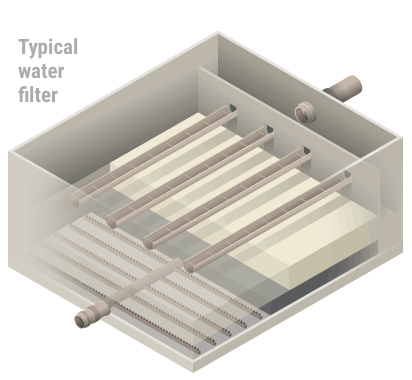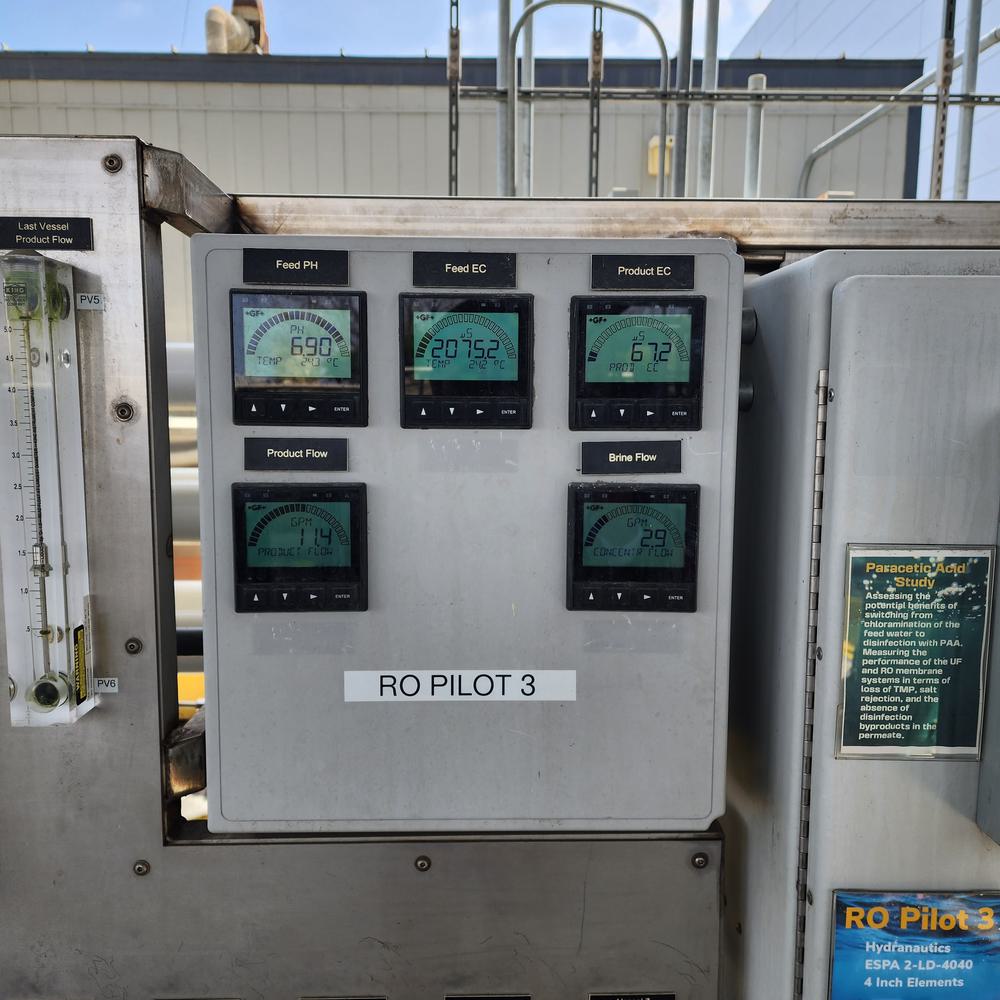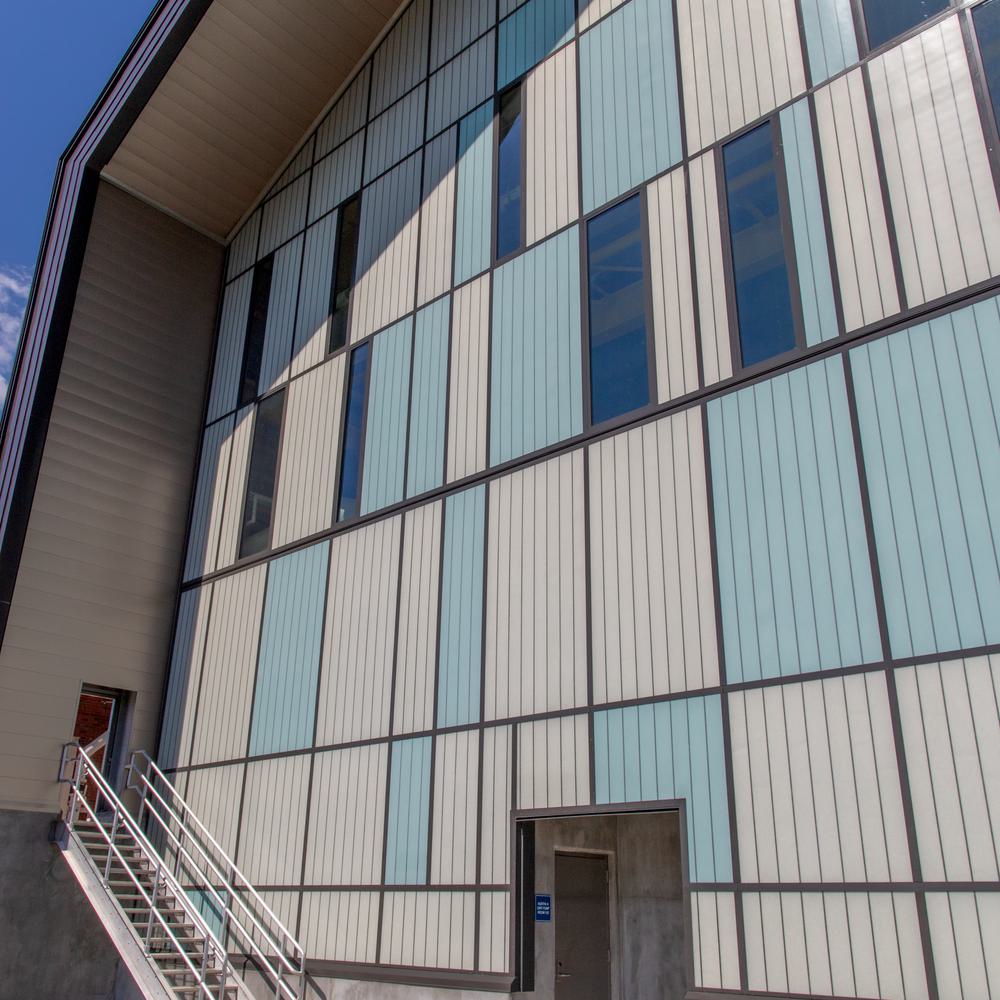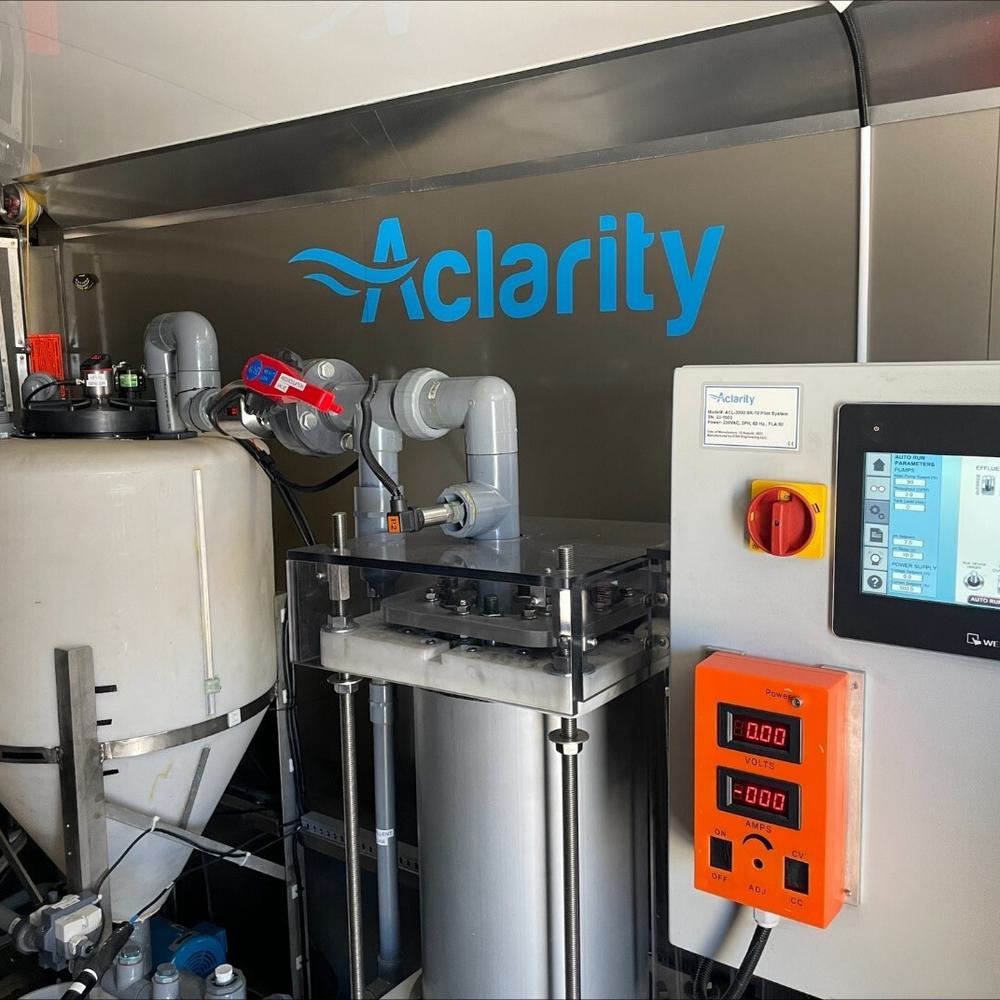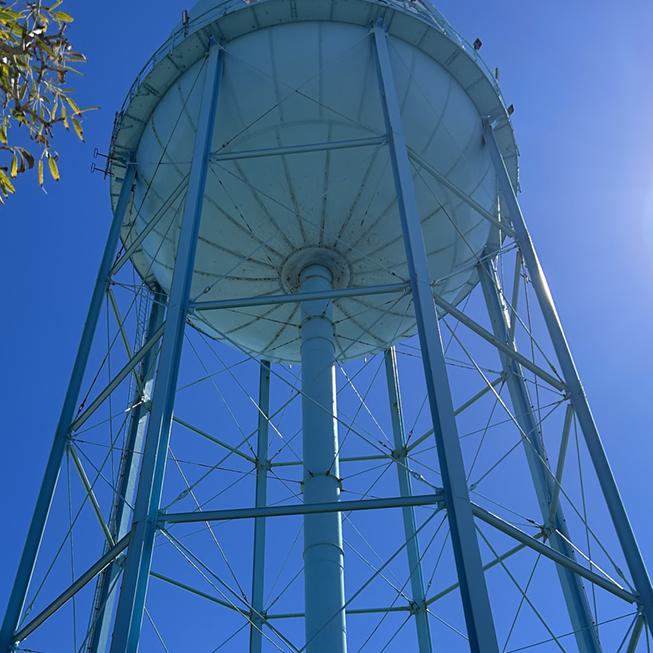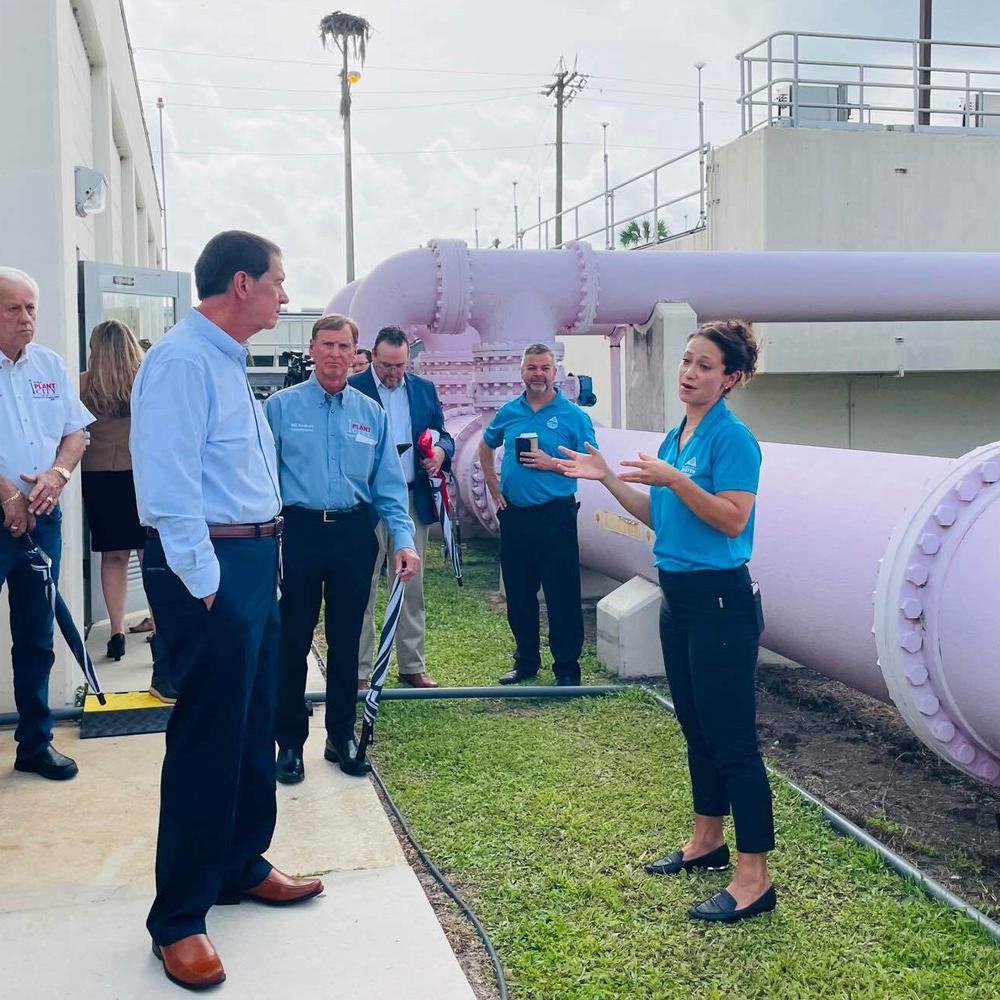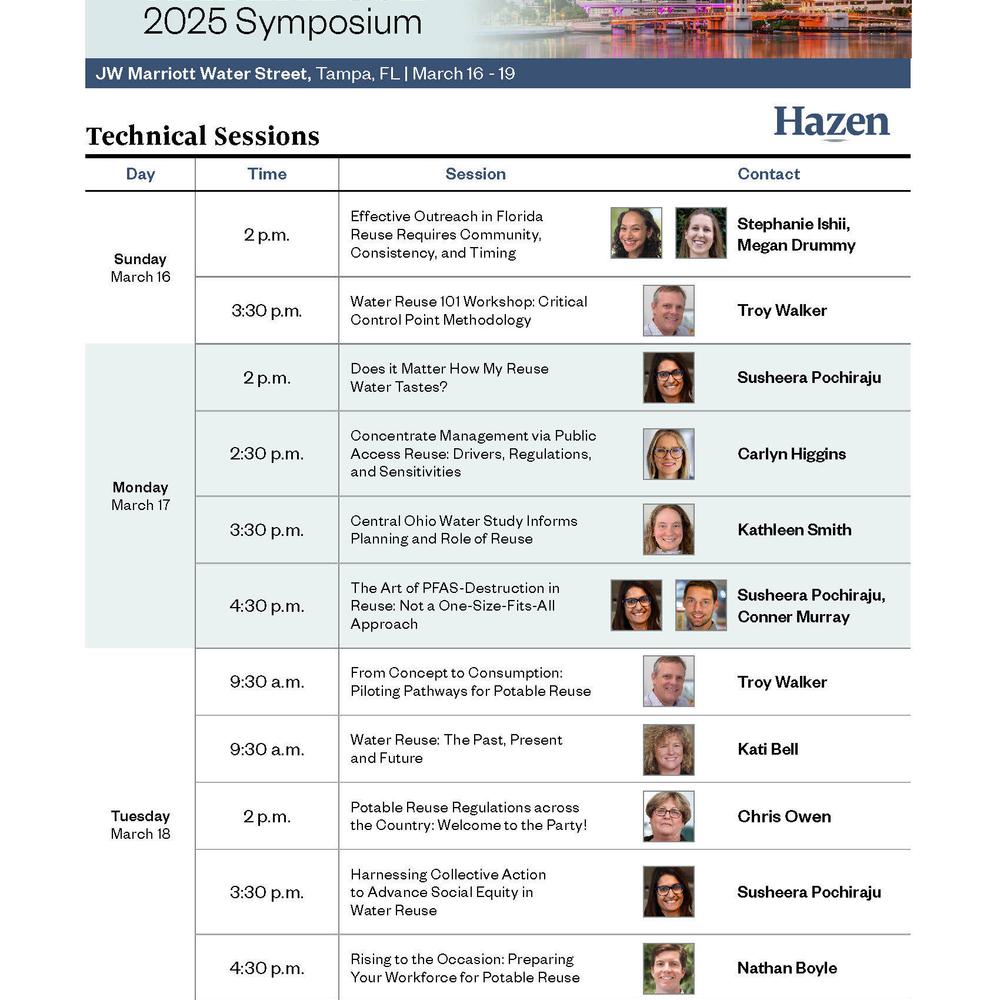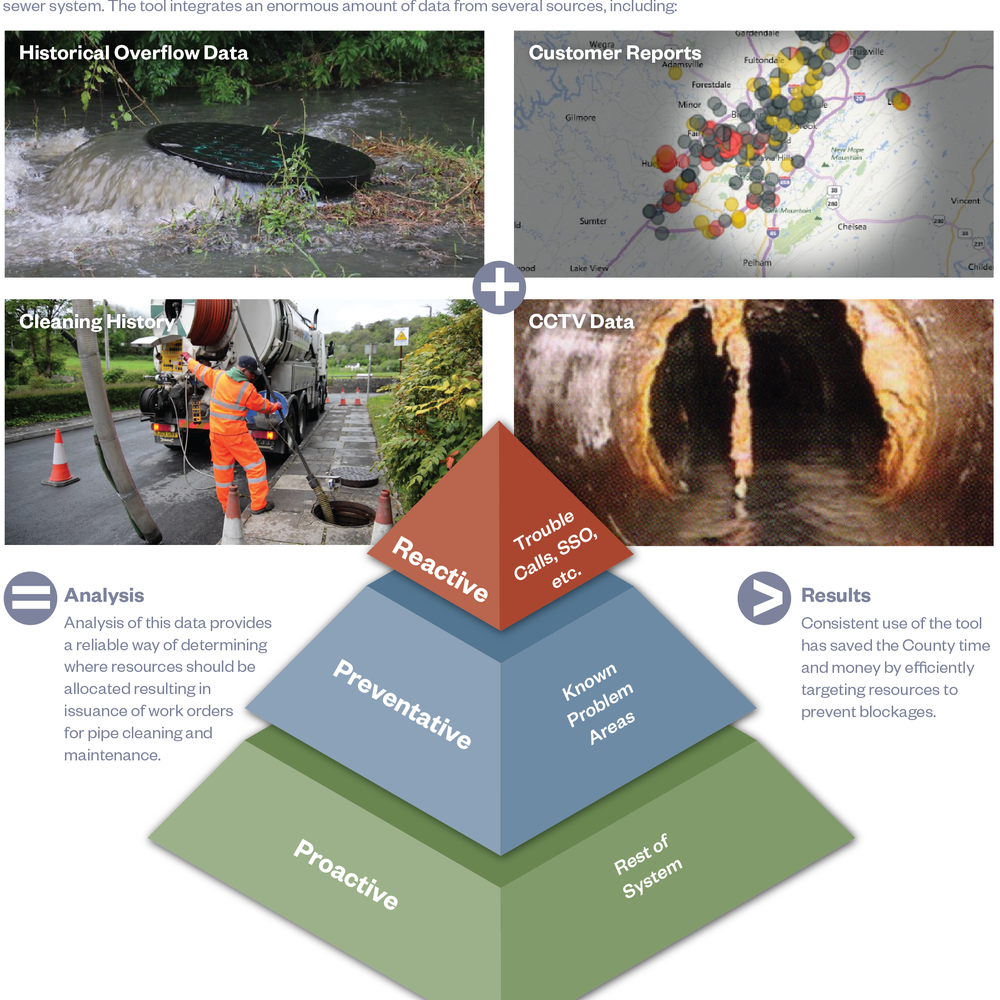Unlocking the Black Box of Biofiltration
Biologically active filtration systems are tough to optimize due to the complex biological, chemical, and physical processes they involve. A groundbreaking Hazen tool is demystifying that process.
BIOFILMS ARE SLIME-COATED layers of bacteria that grow on all sorts of surfaces, often where they aren’t welcome: Dental plaque and pink mold are prime examples.
But they aren’t always nuisances. Wastewater treatment plants have long cultivated biofilms of certain bacteria on bits of plastic suspended in wastewater. Those floating colonies—called moving bed biofilm reactors (MBBRs) or integrated fixed-film activated sludge (IFAS)—siphon organic pollutants and nutrients from the liquid through their normal biological functions. It’s like using goats to eat up weeds.
Wastewater facilities have also allowed biofilms to grow inside filters, where the bacteria can remove nutrients and organic matter. Drinking water plants and water reclamation facilities—which treat wastewater until it's clean enough to reuse—have recently begun adopting that innovative setup. The process is called biofiltration, or biologically active filtration (BAF).
ABOVE: A digitally colorized scanning electron micrograph (SEM) of an unidentified biofilm found in untreated water from a stream. CDC Image (2009) by Janice Haney Carr
What makes biofiltration powerful—and challenging
A TYPICAL WATER FILTER consists of a large, open-topped concrete box filled with whatever does the actual filtering: sand or granular activated carbon (GAC), for example. Gravity carries water down into the box, through the filter, and out via pipes at the base. Biofilters allow biofilms to coat the filter material, adding an additional layer of filtration to the mix.
Letting bacteria grow in a filter might sound counterintuitive, but BAF systems have been proven to enhance conventional filters in multiple ways. For example, they can:
- Remove particles from water as well as traditional filters
- Remove additional contaminants
- Improve the water’s taste, color, and odor
- Discourage the formation of disinfection byproducts (chemicals that can form when disinfectants react with naturally occurring organic materials in water)
- Produce more consistent results
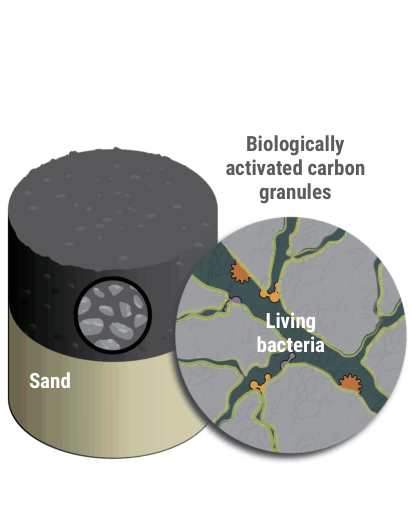
BUT BIOFILTRATION ISN'T WITHOUT CHALLENGES. If the bacteria grow too quickly, they could gunk up the filter and cause headloss: an increase in the pressure needed to pull water down through the filter. Headloss makes it harder for water to pass through the filter, which slows filtration and can lower a plant’s overall productivity. Biofilters also don’t seem to be able to control levels of manganese—a mineral that can stain people’s sinks and laundry—as tightly as conventional filters.
The biggest challenge, though, is broader. Biofiltration involves a jigsaw of biological, chemical, and physical processes. An equally complex mix of factors, from water quality to filter bed depth, can impact BAF performance, and those details can vary widely from facility to facility.
That’s a lot of complexity to navigate, and while there are some industry-wide standards for designing BAF systems, they’re loose at best.
“The design of biofiltration processes has largely been based on rule of thumb,” says Yewei Sun, a Scientist in Hazen’s Wastewater group. “There has been no theoretical model to guide it.”
But there is one now.
A leap forward in BAF optimization with HazenFilter
HAZENFILTER IS A GROUNDBREAKING computer model that simulates biofiltration systems using dozens of mathematical equations for complex biological, chemical, and physical processes.
“This is one of the first mathematical models of biofiltration that combines knowledge of biological treatment from the wastewater world with knowledge of filtration processes from the drinking water world,” says Sun. “It can simultaneously predict headloss buildup and the removal of organics and nutrients during biofiltration.”
Utilities have used HazenFilter to:
- Guide the design of new full-scale and pilot-scale biofilters
- Effectively convert conventional filters to biofilters
- Optimize existing biofilters or conventional filtration systems
- Make even more nuanced projections when combined with pilot data

Yewei Sun developed the earliest version of HazenFilter during his PhD in civil engineering at Virginia Tech, with guidance from water and wastewater experts at Hazen and data from Hampton Roads Sanitation District and Newport News Waterworks. Sun has since joined Hazen, where he continues to help refine the tool.
The tool lets utilities see how filter performance could be impacted by a wide range of conditions—from upstream disinfectants and total organic carbon (TOC) levels to cleaning protocols—without having to physically test each scenario.
HAZENFILTER HAS THREE COMPONENTS—biofilm, headloss, and adsorption (a key process in GAC filtration)—each of which can be turned on or off to reflect a utility’s setup. The biofilm mode even has equations for different kinds of bacteria used to target different contaminants.
The model has been calibrated with years' worth of data from full- and pilot-scale filtration systems around the U.S., and Hazen is actively using it to help clients. Here are some of the ways utilities have used it to improve BAF performance.
Reducing headloss in a shallower-than-usual biofilter
Trinity River Authority (TRA), Euless, Texas
TRA was interested in turning its conventional sand and anthracite filter into a biofilter. But the filter bed was shallower than what’s normally used for BAF. Even after running a full-scale pilot, TRA still had questions about how to prevent excessive headloss during high-flow periods, when productivity was critical. The utility turned to HazenFilter.
Hazen staff calibrated HazenFilter using historical data, then ran the model in various hypothetical BAF setups. The results showed that while BAF would increase headloss, TRA could significantly reduce it by using bigger filter media. Hazen staff also recommended changing the media from anthracite to granular activated carbon (GAC). They knew that GAC would support more biological activity—which can result in better water quality—and allow TRA to keep using its existing backwash system. (Backwashing is a procedure for cleaning filters.)
The tests also showed that a BAF system could remove more natural organic matter and increase disinfectant stability. (Tiny amounts of disinfectants are left in finished water to protect the water from microbes as it travels through pipes to homes and businesses. Disinfectant stability is a measure of how well those disinfectants remain present in the water throughout the distribution system.) Thanks to the modeling, TRA plans to adopt the larger media and eventually convert its filter to BAF.
Preventing excessive biofilm growth during warm weather
Newport News Waterworks (NNWW), Newport News, Virginia
Summer heat made biofilm growth spike in the BAF system at NNWW’s Lee Hall drinking water plant. The excess bacteria directly impacted hydraulic performance: The plant suffered steep drops in production capacity—sometimes exceeding 50%—during summer months.
NNWW researchers partnered with Hazen and used HazenFilter to troubleshoot the issue. After being calibrated with eight months of full-scale historical data, the model predicted that increasing the size of the filter material would improve performance and boost water production.
NNWW used the hypothesis to test a range of media sizes, up to 1.4 millimeters, at full scale. (The utility typically used media smaller than 1 millimeter.) Simultaneously, NNWW tested a new treatment approach: applying a low dose of chlorine to the tops of the biofilters. The chlorine helped check bacteria and algae growth at the surface, thus preventing clogging.
Unit filter run volume (UFRV) is a measure of how much water you can push through a filter before it needs to be cleaned. UFRV increased with both the larger media and the mild chlorine treatment. And in filters tested with a combination of the two, average UFRV shot up by 247%.
No true black boxes
HAZEN'S TEAM continues to refine HazenFilter with every project and client we use it for. We also recently developed HazenOps, a cutting-edge filter surveillance program, to give clients even more ways to optimize and monitor their filtration systems.
Both of these programs continue Hazen’s long tradition of using data to improve how we design and maintain critical water infrastructure for communities around the country and world. And both are proof that with the right experts and the right equations, there are no true black boxes—not even in biofiltration.
